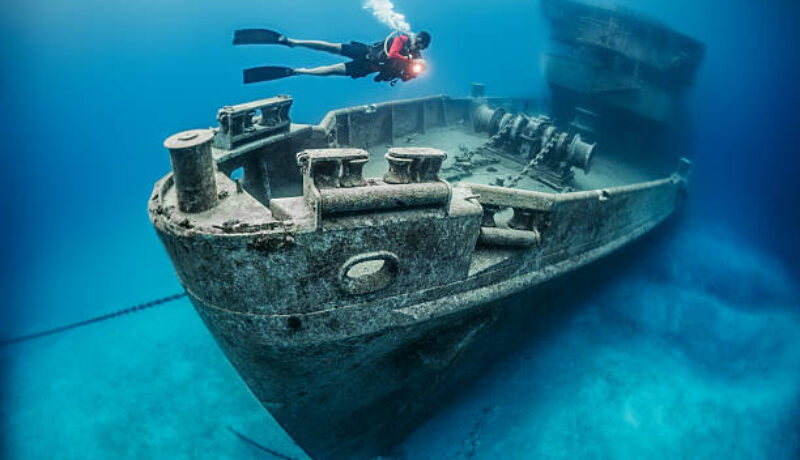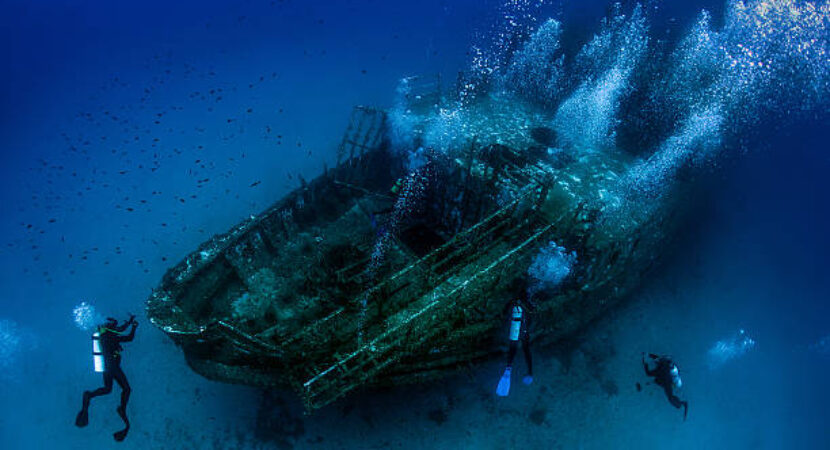Wreck Diving Specialty Course in Andaman
What is Wreck Diving?
The term Wreck Diving denotes recreational and technical diving where the wreckage of ships, aircraft, and other man-made structures are explored. Professional divers conduct wreck dives to explore or find out down wreckage, salvage work, accident or investigation work, and archaeological surveys. A person who completed the Wreck Dive speciality program is eligible to explore underwater drowned wreckage. Most wreckage dive sites are shipwrecks, and there is an increasing trend to scuttle retired ships to create artificial shipwreck reefs.
It is a popular form of diving that requires a specialised set of equipment, training, skills, and experience. Artificial wreckage is the habitat of multiple species of marine life and presents new skill challenges for scuba divers. Shipwrecks are usually large structures with many exciting pieces of machinery, different rooms, personal items, and belongings left behind. Which has often exciting or tragic history.
Inclusions of Wreck Diving Speciality Program
A person minimum of 12 years of age and who completed an open water diver certification is eligible for a Wreck dive speciality course. He/she must be physically and mentally fit to enrol for the program. The wreck diving speciality course includes the following.
- 2 open water dives up to 18 meters
- A personal instructor (Instructor and participant ratio is 1:2)
- Equipment rental
- Certification cost
- Complimentary pick-up and drop
The program involves boat dives (transport to the dive site via speed boat) and dive site Inchket wreck based in Havelock Island. The whole program costs INR 15000 per person excluding an additional 18% tax.
Types of Wreck Dive
There are usually 3 categories of wreck dive namely:
- Non-penetration diving (Diving outside the wreckage)
- Limited Penetration (Diving within the light zone)
- Full Penetration (Diving beyond the light zone)
Non-penetration diving (Diving outside the wreckage)
The term Non-penetration diving involves diving around or outside the wreckage and is a great form of diving for those with limited wreck dive experience. Non-penetration diving is also suitable for people equipped with minimum equipment, skills, and training and people nervous about venturing inside a wreck. Some wrecks are Non-penetration due to their small size, and partial or full destruction, and the level of fragmentation makes them unsuitable for penetration.
Limited Penetration (Diving within the light zone)
Limited penetration diving involves diving in a limited area inside a wreck with a minimum chance of complicacy and ensnarement. Limited penetration diving allows divers to stay within the limited light zone area created by a wreck while exploring it.
Full Penetration (Diving beyond the light zone)
Full penetration wreck dive allows divers to penetrate at any level of the wreck and is the most advanced and adventurous form of wreck diving. The diver can explore any part inside a wreck provided the structure is stable and divers are both skilled and experienced enough to do the dive. Full penetration wreck dive is a kind of cave diving and sometimes may involve decompression dives. This kind of wreck dive is a great way to explore the entire shipwreck, different rooms, hidden wreckage areas, personal items and equipment left behind.
Why Choose Wreck Diving?
Wreck dive is an advanced form of diving to learn the incredible history of multiple drowned wrecks. The diving program offers opportunities to learn new skills and improve body positioning, navigation, buoyancy, and finning techniques during wreck exploration.
Wreck dive is the best way to explore abundant marine life in intensive areas because wrecks are often possessed by critters, sponges, corals, and schools of reef fish seeking shelter amongst wreckage structures. It is also a good opportunity to capture beautiful moments of sunken wreckage and associated marine life. It’s going to be a wonderful experience to witness the drowned wreckage of tanks, ships, and aeroplanes covered in colourful corals.
Best Wreck Diving in Andaman
A cargo vessel named SS Inchkeith loaded with coal and timber got struck by a rock and drowned south-east of the south Andaman district near Duncan Island in March 1955. The ship wreckage sunken at a depth of 60 feet/ 18 meters and today is a popular site for Wreck Diving in Andaman. Many enthusiastic divers love to explore pieces of shipwreck, enormous propellers, hatches, and starboard and solitary giant grouper, barracuda, sweetlips, ghost pipe fish, reef fish, boxfish, triggerfish, angelfish, and multiple other marine species. The wreck is rusty and covered with patches of soft corals lying on a sandy bottom.
Suggested Read: Open water diver course in Andaman
Essential Diving Gear for Wreck Diving
A specialised set of diving gear is optional at many shallow water wrecks. A diver must be equipped with multiple torches, wreck reels, dive computers, air sources, and other necessary wreck-diving tools for advanced wreck dives at depth.
The following are important items to carry along for wreck dives.
- Compass
- Dive knife
- Wreck reel
- Dive torch and backup
Required Skillset for Wreck Diving
A wreck diving speciality course is recommended to learn multiple skills for wreck diving safety and to get the most out of it. Apart from that, a wreck diver must have good buoyancy, navigation, clean dive gear setup to avoid possible collision with the wreck interior and discard any loose gear to get trapped in the wreck. Frog finning is an important technique for wreck penetration to prevent silt disturbance while exploring wreck interiors. The best way to prevent disorientation during the dive is to familiarise themselves with the wreck layout beforehand.
Possible Risks of Wreck Diving
Limited and full penetration wreck dives involve a higher risk of disorientation, loss of vision, and entanglement. The possible risk of disorientation arises when the clear water inside the wreck becomes clouded by rust particles and sediments at the time of exit. The potential dangers of wreck diving can be minimized by providing appropriate wreck dive training to divers, using wreck reels to mark dive routes and undertaking dives within the limits of knowledge, skills, experience, and level of training. Perfect buoyancy control and frog finning techniques play an intense role in avoiding sediment disturbance during a dive and are great skills for wreck dives.
Non-penetration wreck dives comparatively involve minimum risk and act as normal recreational dives, however, divers should pay attention to avoid any sharp wreck edges.

